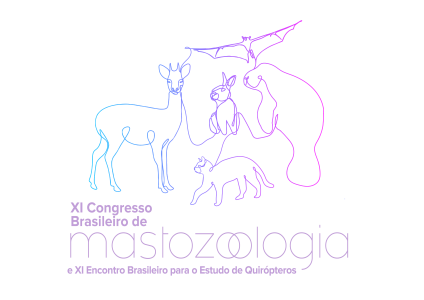Dados do Trabalho
Título:
COMPARATIVE DESCRIPTION OF THE FORELIMB OF THE HERPAILURUS YAGOUAROUNDI (GEOFFROY SAINT-HILAIRE, 1803) (CARNIVORA; FELIDAE)
Resumo:
The forelimb of felids has an important role in capturing, subjugating and dispatching prey, as well as in locomotion For this reason, comparative studies of the forelimb could reflect ecological variables such as prey size preference, habitat, and locomotor mode. However, there are still few studies correlating muscular anatomy with function and ecology in felids. The musculature of the jaguarundi (Herpailurus yagouaroundi) was never described before and there is no published comparison with other members of the tribe Acinonychini, the puma (Puma concolor) and the cheetah (Acinonyx jubatus). Thus, the objective of this study is to describe the musculature of the forelimb of the jaguarundi and compare it with the other members of Acinonychini. Both forelimbs of one specimen of jaguarundi were dissected and documented with digital photos. Muscle attachments were documented with pencil paint directly in the bones. Muscle weight was recorded using a BEL engineering 210g (e:1mg) precision balance and the musculature data was compared with the puma, the cheetah and the ocelot as described in the literature. Our results show that the origin of m. biceps brachii is similar in puma, cheetah and ocelot (supraglenoid tubercle of the scapula), but unlike the jaguarundi (bicipal groove of the humerus). The m. triceps brachii of the jaguarundi shows five heads in the left forelimb, but only four in the right. The presence of two extra heads in this muscle was also documented in the cheetah and the ocelot. The m. palmaris longus serves distinct digits in the puma (digits I to IV), jaguarundi (all five digits) and ocelot (digits II to V). Some fleshy fibers of m. latissimus dorsi inserts onto the caudal belly of the m. pectoralis profundus in the jaguarundi and ocelot, which was not documented for cheetah and puma. The m. biceps brachii is the principal flexor muscle of brachium, and is important to approximate the body against the area of locomotion. Its origin in the jaguarundi indicates an increase of the approximation angle of the forelimb, making climbing more difficult. The presence of five heads of the m. triceps brachii contribute to stabilizing and extending the elbow, which is congruent with terrestrial locomotion. These characteristics suggest that the jaguarundi is more adapted for terrestrial locomotion, although it shows a similar proportion of flexor and extensor muscles adaptation typical of scansorial locomotion. The presence of five tendons in the m. palmaris longus contributes to the complete closing of the manus, which helps to manipulate prey.
Herpailurus yagouarundi, anatomy, miology, musculature, felidae
Financiamento:
Área
Anatomia e Morfologia
Autores
Ashtari Mota Piancastelli, Fernando Araújo Perini
